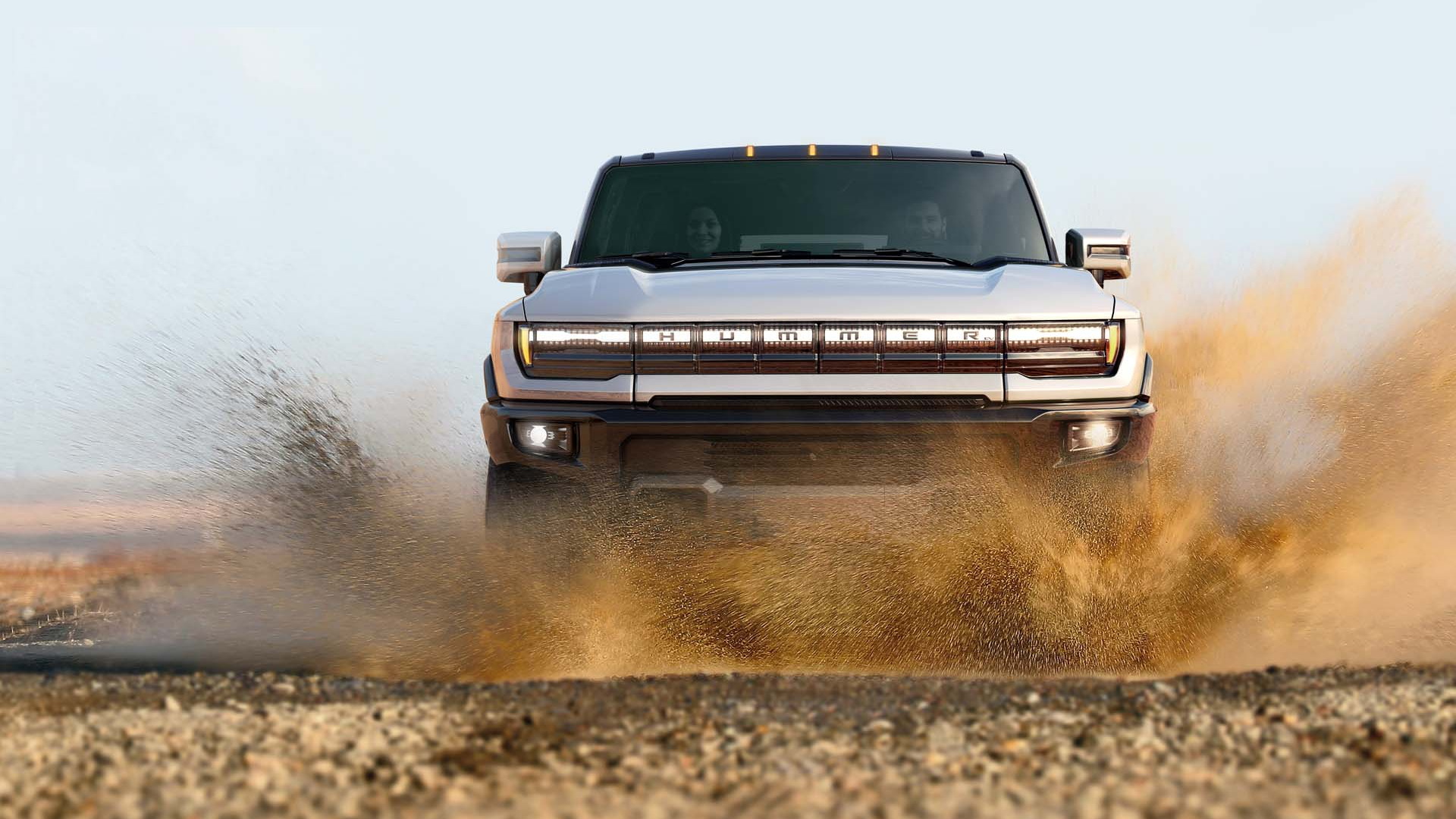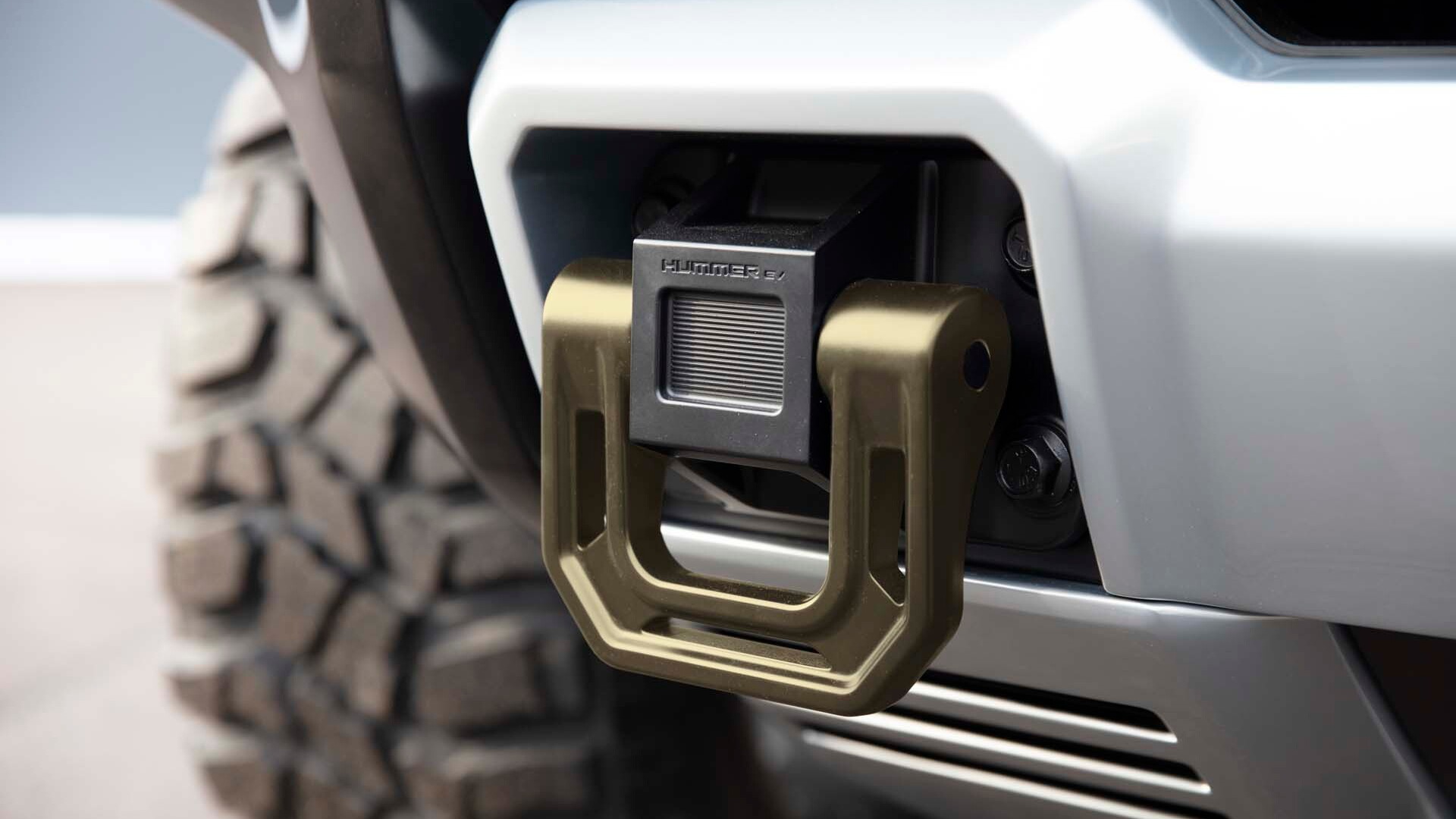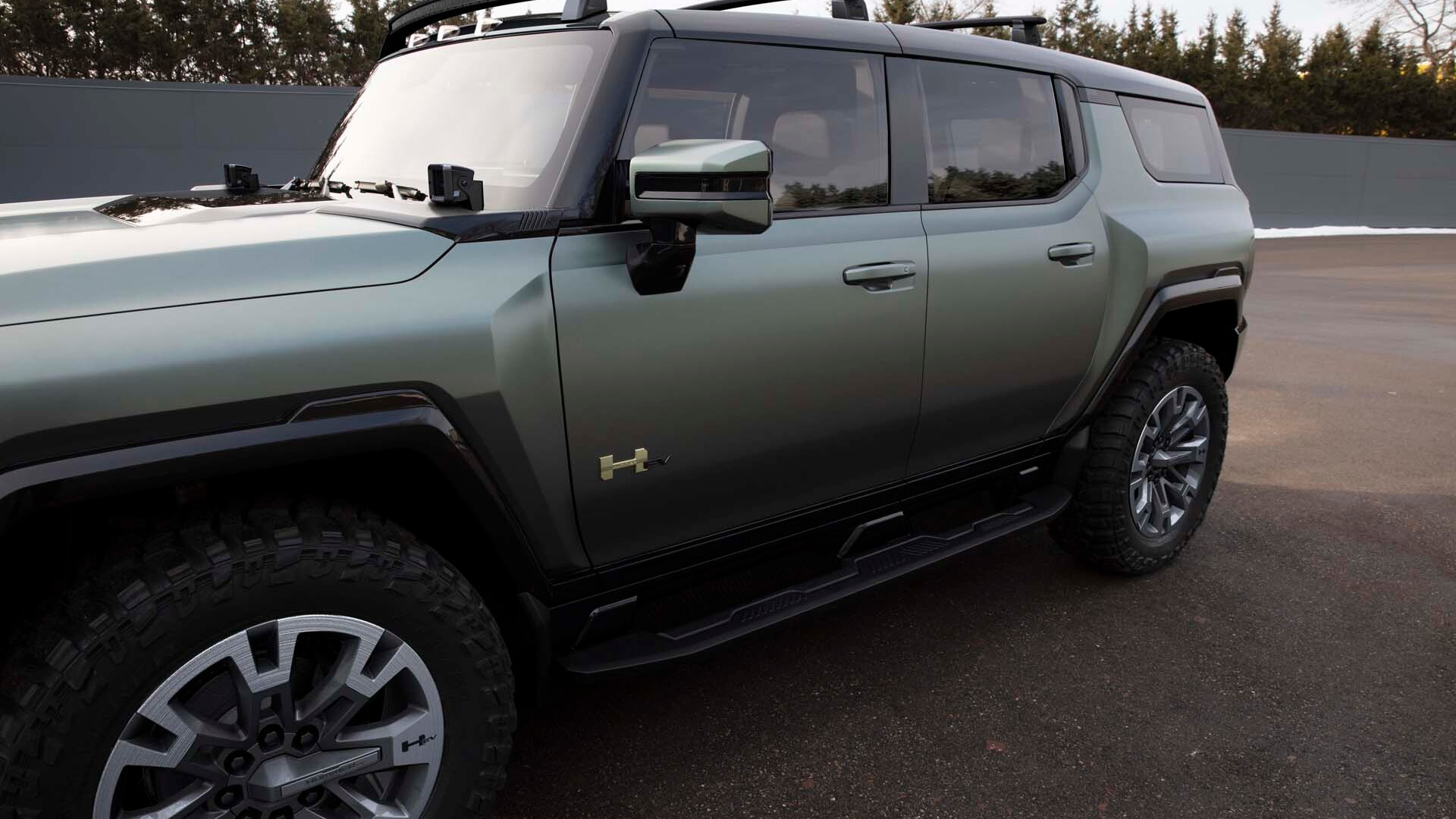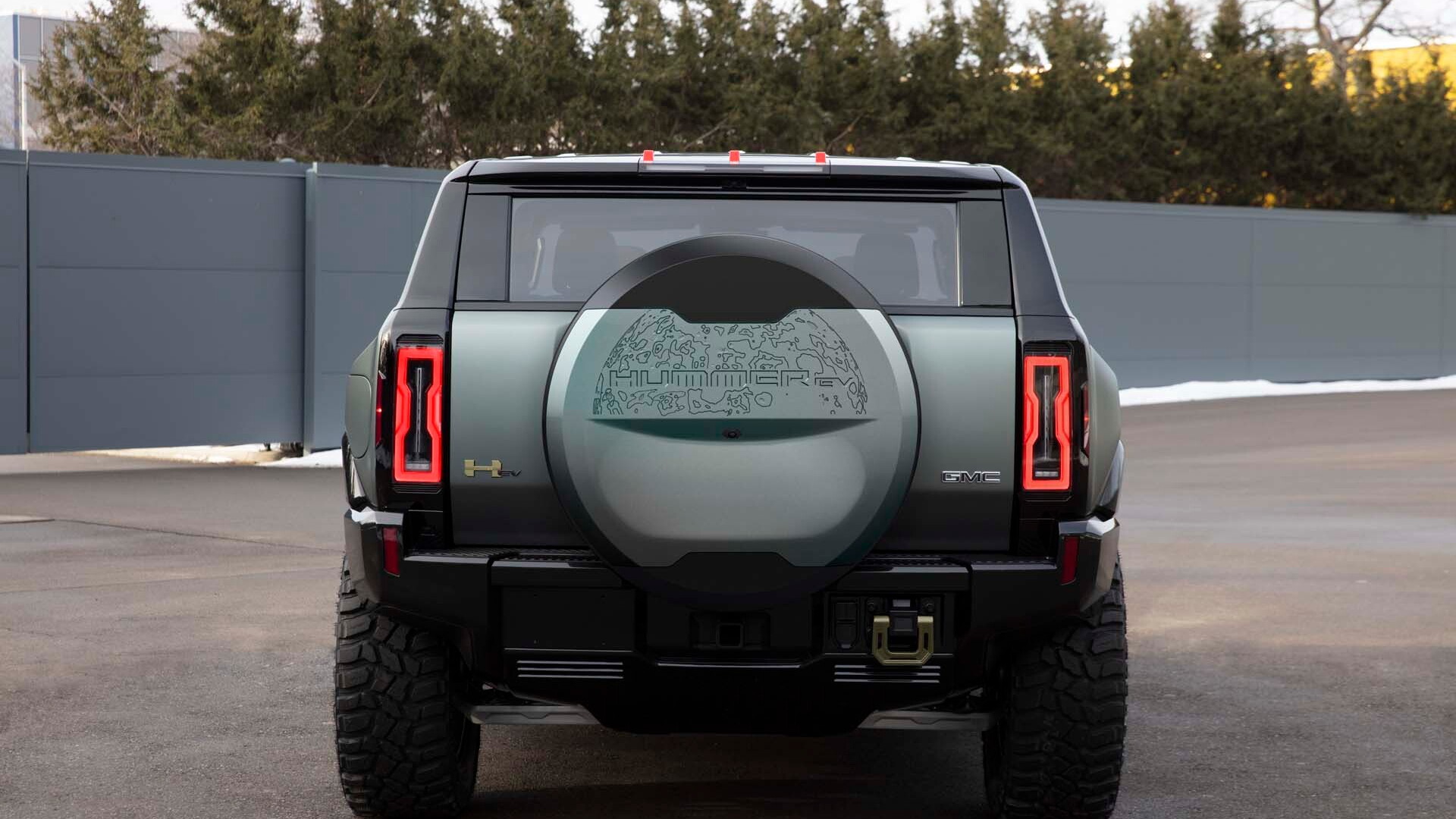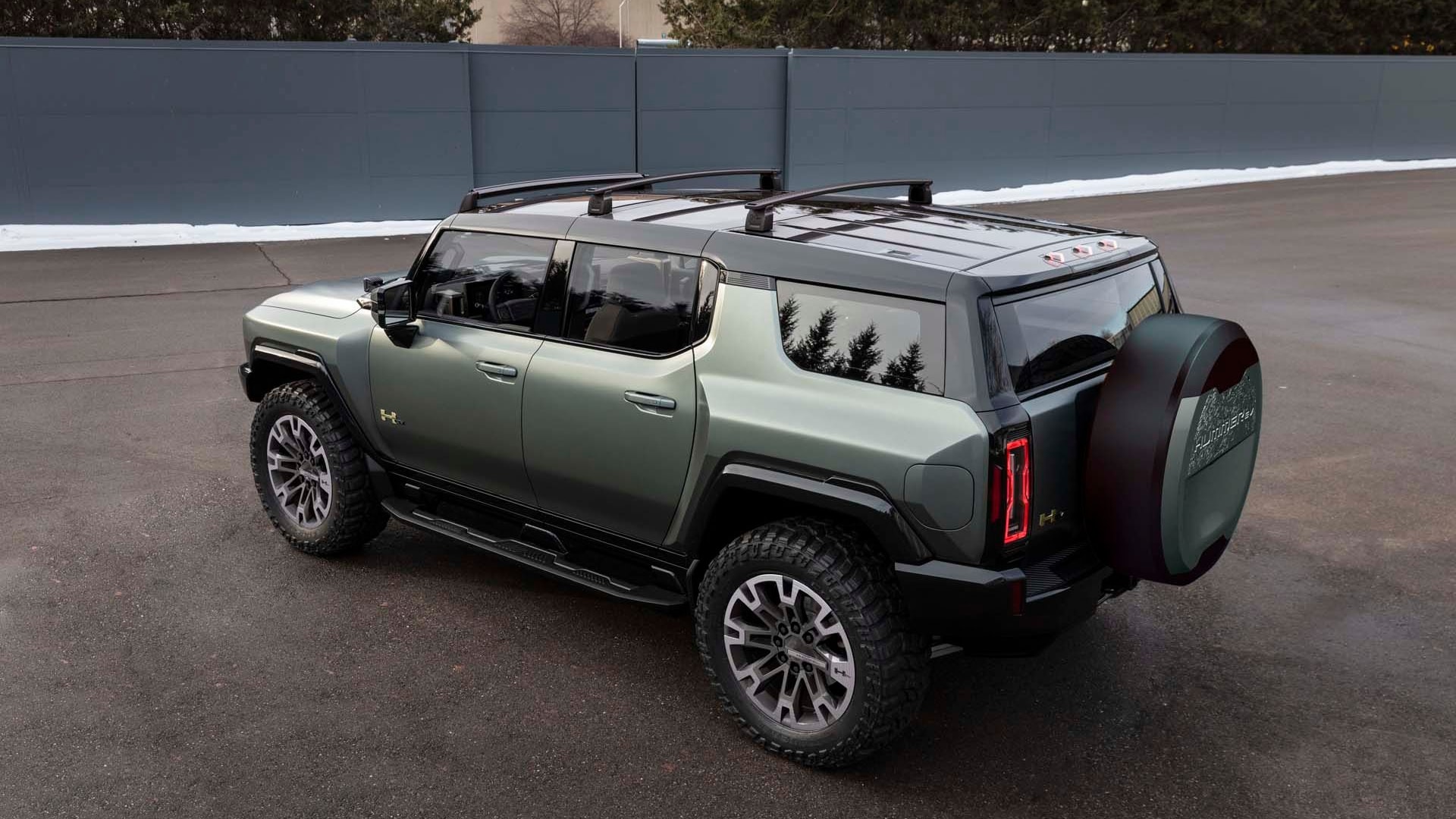The 2022 GMC Hummer EV SUT is tailpipe emissions free and represents a cleaner, all-electric future of GM. But it has one little inconvenient truth: It’s very, very heavy.
According to specifications not yet published but brought to our attention earlier this week from GM-Trucks.com, at least one version of the GMC Hummer EV SUT has a curb weight of a whopping 9,034 pounds, with a gross vehicle weight rating (GVWR) of 10,400.
That’s much heavier than the Hummer H2 based on GM’s big full-size SUVs, even heavier than the original military-grade transporter, the H1. It’s more than double the weight of two 2022 Ford Broncos.

2024 GMC Hummer EV SUV
It leaves just 1,354 pounds for passengers and payload for this five-seater—an odd combination for such a heavyweight.
GMC confirmed the specs to Green Car Reports as legitimate but had no further comment about the truck’s weight classification—something that might be helpful for understanding this megatruck’s positioning. So in the absence of other guidance, we’ll speculate a bit on the implications.
From a consumer standpoint, the weight will be reflected in the truck's efficiency; and it might affect not just the safety of those inside the vehicle but outside.
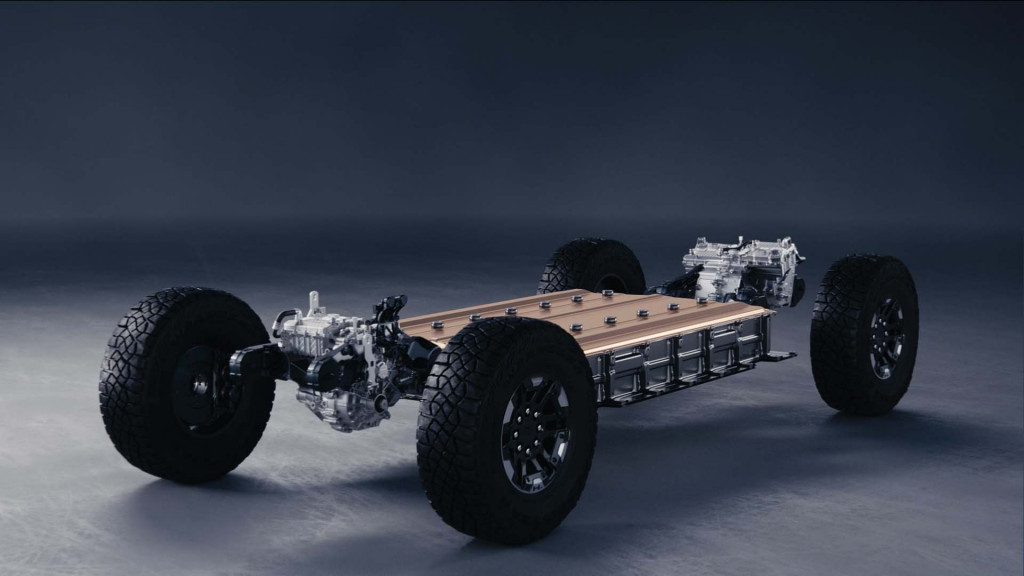
2022 GMC Hummer EV
Let’s start with the efficiency. GM is claiming a range of more than 350+ miles for the Hummer EV SUT, which will have a battery pack in the vicinity of 205 kwh. If GM can reach an efficiency of 1.7 miles per kwh for a vehicle that weighs more than 9,000 pounds, that could speak very well for GM’s models that aren’t heavyweights.
A very heavy truck needs a very heavy battery
GM said with the Ultium large-format pouch cells the company has gained nearly 60% in energy density by weight versus the Bolt EV’s cells, and the Bolt EV pack weight was 960 pounds for 60 kwh.
Given an assumption of 213 kwh as a gross capacity of the Hummer EV’s pack, that puts the Hummer EV’s double-layer pack at maybe 2,100 pounds—before considering the weight of extra protection for off-roading and extra cooling for WTF mode.

Vehicle weight classes - Alternative Fuels Data Center, U.S. DOE
Going by either of the current federal definitions, the 9,034-pound vehicle weight and 10,400 GVWR would classify the GMC Hummer EV as a heavy-duty (Class 3) vehicle. Currently, the EPA and CARB draw the line at 8,500 pounds, by GVWR, for the difference between light duty and heavy duty trucks, while the Federal Highway Administration (and U.S. DOT) put it at 10,000 pounds.
Enabling more gas and diesel?
As a Class 3 vehicle, the GMC Hummer EV won’t have to comply with some of the rules that apply to passenger vehicles and light trucks. And GM won’t have to face the reality of an official EPA range number, or disclose expected MPGe numbers for city and highway driving.
It’s conceivable that, if the Hummer EV falls into this category, its sales will help allow GM to put more gas-guzzling and diesel-swilling heavy-duty pickups out to the market without regulatory consequence. In the federal government’s summary of regulatory announcements regarding the framework for Tier 3 standards, it states: “Depending on the standards and the vehicle class, these flexibility provisions include credits for early compliance and the ability to offset some higher-emitting vehicles with extra-clean models.”

Bollinger B2 production intent
So far there’s no other fully electric Class 3 truck that crosses the line to become more of a personal-luxury or recreational model than one intended for business-hauling purposes. Bollinger Motors has been straightforward all along in declaring that its B1 and B2 electric trucks fit the Class 3 category and above because it allows that flexibility. However, the company's trucks are expected to carve out a minor market niche in personal sales, with its chassis focused toward commercial trucks and upfits.
Weight wins; those in other vehicles don’t
Because of their typical focus on cargo-hauling and special-purpose vehicles, Class 3 trucks aren’t expected to comply with certain safety features required of light vehicles.
Meanwhile, the Insurance Institute for Highway Safety told Green Car Reports that while it normally tests large pickups, it doesn’t test the heaviest versions of a given model.
That’s because, from insurance data, it’s found that EVs have lower injury claim rates compared to conventional gasoline counterparts, perhaps because occupants of heavier vehicles are exposed to lower forces in multi-vehicle crashes. For example, the Volvo XC40 Recharge has a curb weight of 4,787 pounds, versus 3,811 pounds for the gasoline XC40.
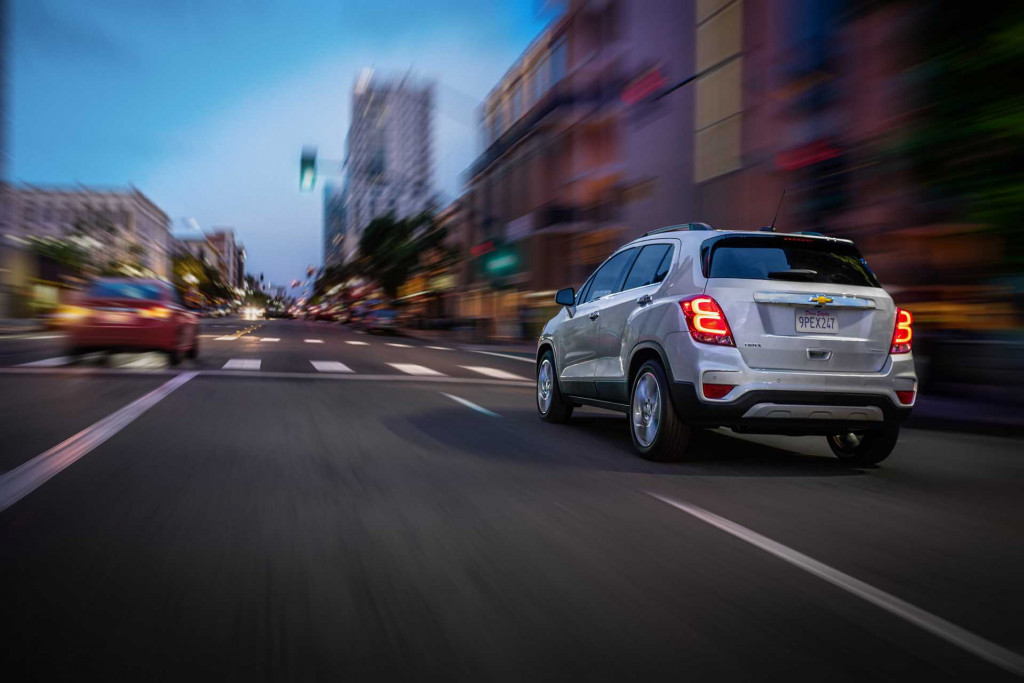
2020 Chevrolet Trax
“Heavy vehicles pose a risk to the occupants of smaller, lighter vehicles, and especially to pedestrians,” IIHS spokesperson Russ Rader told Green Car Reports, pointing to recent IIHS research suggesting late-model SUVs pose a higher risk to pedestrians in crashes than cars do—with a coinciding rise in pedestrian deaths with more tall, heavy SUVs in the vehicle mix.

2022 GMC Hummer EV prototype testing in Moab
The IIHS emphasizes that cutting weight from the heaviest vehicles is better than cutting weight across the board. That’s been a consideration in recent revisions of government-mandated fleet targets. But more vehicles like the GMC Hummer EV would, just as the original Hummers, disrupt the scene once again.
